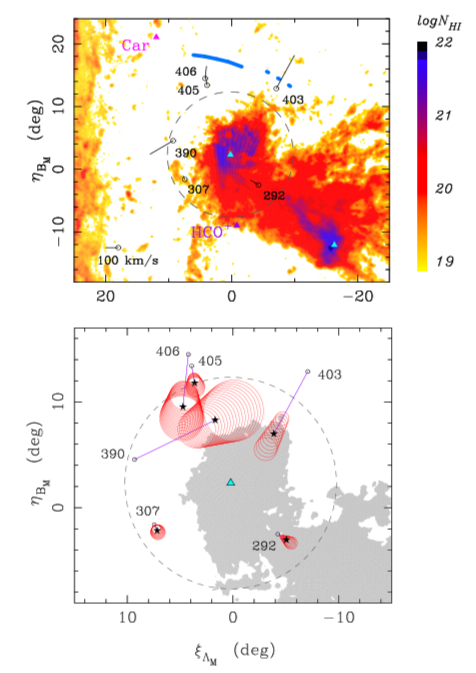Principal Investigator: Prof. Dana Casetti
A dynamical description of our Galaxy, the Milky Way, is possible only when the full, 3-component velocity vector of a given object is measured. For decades, only one component of this vector — namely that along the line of sight — could be measured for statistically sound samples and with reliable accuracy. The remaining two components, known as transverse velocities, posed a challenge because they rely on the precise measurement of extremely small sky angles. These quantities are known to the astronomer as parallax and proper motion. There are very few research groups in the world that have the means and the know-how to tackle these measurements in a meaningful way. A revolution is this field is happening now with the European Space Agency mission Gaia: the amount and the precision of such measurements is astounding; furthermore, the enabling of such measurements beyond the Gaia limit (in depth and resolution) is also formidable. Our task at SCSU is to use the Gaia data for both tasks: kinematical data analysis and enabling further such measurements using ground-based and HST-based data.

The observational dynamical description of a galaxy using 3D velocities is only possible in our Galaxy and the Local Group (which includes Andromeda and satellite galaxies of the Milky Way and Andromeda). We need such a description in order to meaningfully constrain cosmological models. It is on local, small scales (such as the Local Group) that these models are in tension with observations.
In the figures to the left, young stars are shown in the outskirts of the Large Magellanic Cloud. Their proper motions indicate the origin: in situ and expelled from the inner regions of the Cloud. For details see Casetti et al. (2018) and Moni Bidin et al. (2017).
News
- July 2021. Dr. Casetti elected as member of the organizing committee of IAU's Commission A1 - Astrometry.
- July 2018. Dr. Casetti's work featured in the New Haven Register.
- June 2018. Dr. Casetti taught at the Vatican Observatory Summer School.
- March 2018. Work on the leading arm of the Magellanic Stream was featured in an article in Science Daily.
- April 2014. Dr Casetti's work featured in Scientific American.
Grants
- CT NASA Space Grant, 2021. Dana Casetti, PI, "Point Spread Function Modelling of WFPC2/HST Images using Deep Learning."
- STScI NASA grant, 2019. Dana Casetti, PI, "Expanding HST's Astrometric Legacy: A Comprehensive Astrometric Calibration of WFPC2"
- NASA Astrophysics Data Analysis Program 17-ADAP17-0052, 80NSSC18K0422, 2017. Dana Casetti, PI, "Tracing Star Formation in the Outskirts of the Milky Way"
- Hubble Space Telescope GO-14687, 2016. Dana Casetti, Co-PI, "The Origin of the Leading Arm of the Magellanic Stream"
- CT NASA Space Grant, 2015. Dana Casetti, PI, "Orbits of Milky Way Satellites"
Collaborators
Terrence M. Girard (SCSU), Elliott P. Horch (SCSU), Rene Mendez (Uiversidad de Chile), Christian Moni Bidin (Universidad Católica del Norte, Chile), Lan Zhang (National Astronomical Observatories, China), Katherine Vieira (Centro de Investigaciones de Astronomía, Venezuela), Vladimir I. Korchagin (Southern Federal University, Russia), William F. van Altena (Yale University)
Publications
A fairly complete list of Dr. Casetti's publications can be found here.
